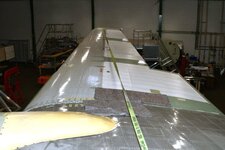What other parts were secured with countersunk screws? Do you know?
For sure the fairing of the fuselage-horizontal stabilizer transition ...
BTW ... if we talk about such details .... the nose cone was made of a plywood / veneer. Generally of the wood.

